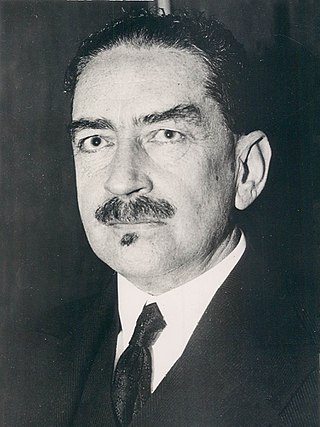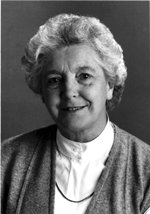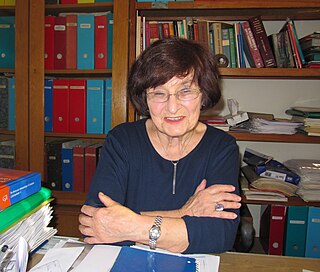Related Research Articles

Walter Gilbert is an American biochemist, physicist, molecular biology pioneer, and Nobel laureate.

Frederick Sanger was a British biochemist who received the Nobel Prize in Chemistry twice.

Ludwig Karl Martin Leonhard Albrecht Kossel was a German biochemist and pioneer in the study of genetics. He was awarded the Nobel Prize for Physiology or Medicine in 1910 for his work in determining the chemical composition of nucleic acids, the genetic substance of biological cells.

Hans Karl August Simon Euler-Chelpin, since 28 July 1884 von Euler-Chelpin, was a German-born Swedish biochemist. He won the Nobel Prize in Chemistry in 1929 with Arthur Harden for their investigations on the fermentation of sugar and enzymes. He was a professor of general and organic chemistry at Stockholm University (1906–1941) and the director of its Institute for organic-chemical research (1938–1948). Euler-Chelpin was distantly related to Leonhard Euler. He married chemist Astrid Cleve, the daughter of the Uppsala chemist Per Teodor Cleve. In 1970, their son Ulf von Euler, was awarded the Nobel Prize in Physiology or Medicine.
William Cumming Rose was an American biochemist and nutritionist. He discovered the amino acid threonine, and his research determined the necessity for essential amino acids in diet and the minimum daily requirements of all amino acids for optimal growth.

Archer John Porter Martin was a British chemist who shared the 1952 Nobel Prize in Chemistry for the invention of partition chromatography with Richard Synge.

Sir Arthur Harden, FRS was a British biochemist. He shared the Nobel Prize in Chemistry in 1929 with Hans Karl August Simon von Euler-Chelpin for their investigations into the fermentation of sugar and fermentative enzymes. He was a founding member of the Biochemical Society and editor of its journal for 25 years.
Edward Joseph Conway FRS was an Irish biochemist known for works pertaining to electrolyte physiology and analytical chemistry.

Albert Neuberger was a British Professor of Chemical Pathology, St Mary's Hospital, 1955–1973, and later emeritus professor.
Harden M. McConnell was an American physical chemist. His many awards included the National Medal of Science and the Wolf Prize, and he was elected to the National Academy of Science."
Joseph Stewart Fruton, born Joseph Fruchtgarten, was a Polish-American biochemist and historian of science. His most significant scientific work involved synthetic peptides and their interactions with proteases; with his wife Sofia Simmonds he also published an influential textbook, General Biochemistry. From 1970 until his death, Fruton worked extensively on the history of science, particularly the history of biochemistry and molecular biology.

Winifred May Watkins, FRS was a British biochemist and academic. She worked at the Imperial College School of Medicine.
Frank Dickens FRS was a biochemist, best known for his work at the Courtauld Institute of Biochemistry with Edward Charles Dodds on the pentose phosphate pathway which generates NADPH.
Ida Maclean was an English biochemist and the first woman admitted to the London Chemical Society.

Jnanendra Nath Mukherjee CBE, FRSC was an Indian colloid chemist.

Edward Provan Cathcart was a Scottish physician and physiologist of international fame. The Cathcart Chair in Biochemistry at the University of Glasgow is named after him. Together with John Boyd Orr he published influential papers on protein metabolism in humans. He is also remembered as Chairman of the Scottish Health Board Committee 1933-1936. The Cathcart Committee was critical to the Scottish input to the foundation of the National Health Service after World War II. His obituary described his as a "life well spent in the service of mankind".

Roland Victor Norris was a biochemist and agricultural scientist who worked in India and Ceylon. He served as the first agricultural chemist to the government of Madras.
Walter Ramsden was a British biochemist and physiologist. He discovered the phenomenon now known as Pickering stabilization in 1903, before the effect was independently rediscovered by Spencer U. Pickering in 1907.

Elwira Lisowska is a Polish biochemist and professor. She made significant contributions to the biochemistry of human blood groups, especially MNS and P1PK blood group systems, and to the immunochemical characterization of glycopeptide antigens.
Hermann Lehmann was a German-born British physician and biochemist known for his works on the chemistry and diversity of hemoglobin. Describing about 75 different hemoglobin, he discovered the most number of hemoglobin types than anyone else. He is regarded as one of the founders of molecular anthropology.
References
- 1 2 3 4 5 6 7 8 9 10 11 12 Watkins, W. M.; Bagshawe, K. D. (2005). "Walter Thomas James Morgan CBE. 5 October 1900 – 10 February 2003: Elected F.R.S. 1949". Biographical Memoirs of Fellows of the Royal Society. 51: 291–302. doi: 10.1098/rsbm.2005.0018 .
- ↑ "Professor Walter Morgan – Obituaries, News -The Independent". London. 25 February 2003. Retrieved 2 December 2008.[ dead link ]
- ↑ Wu, Albert M (2011). The Molecular Immunology of Complex Carbohydrates. p. 809. ISBN 9781441978769.